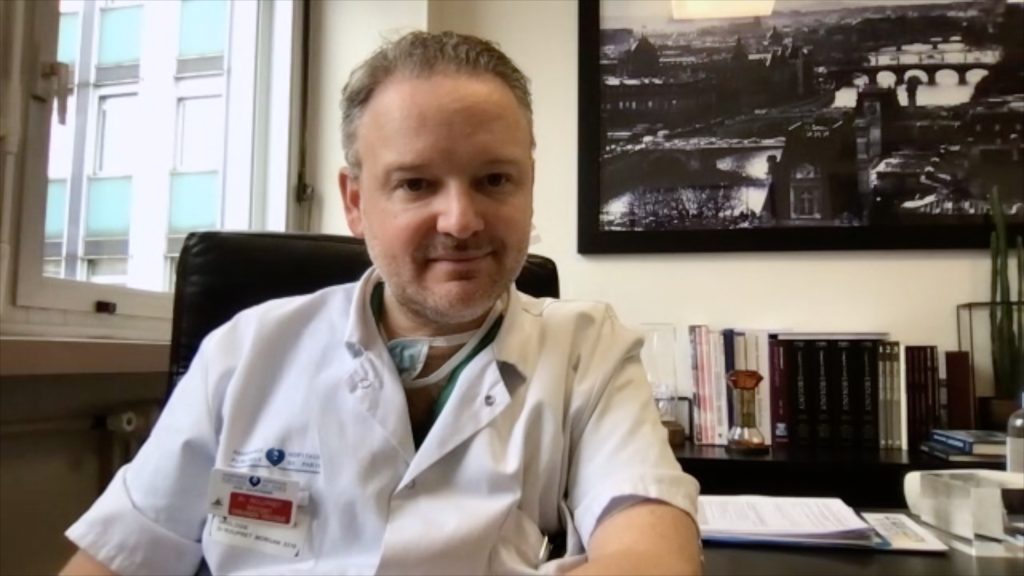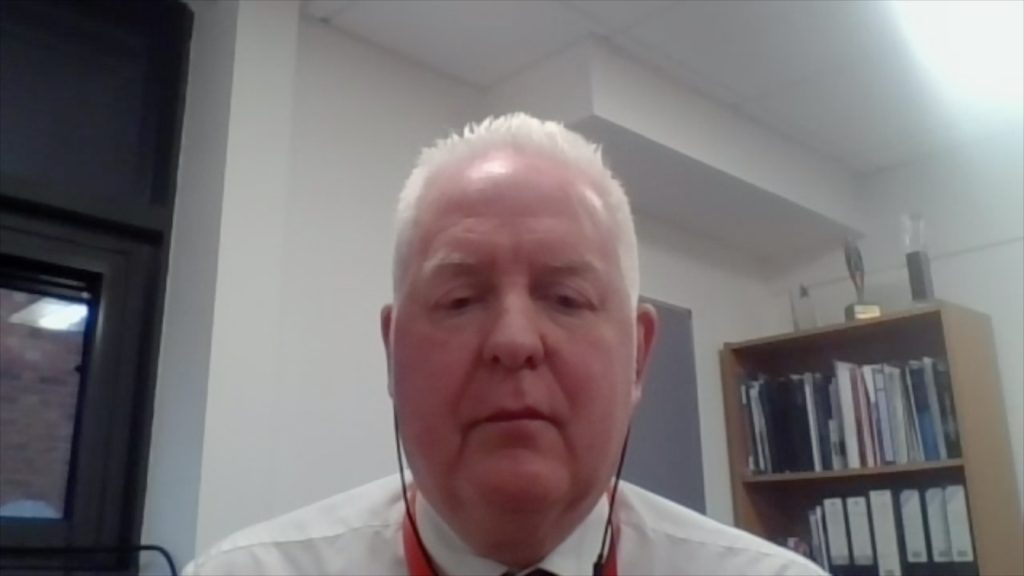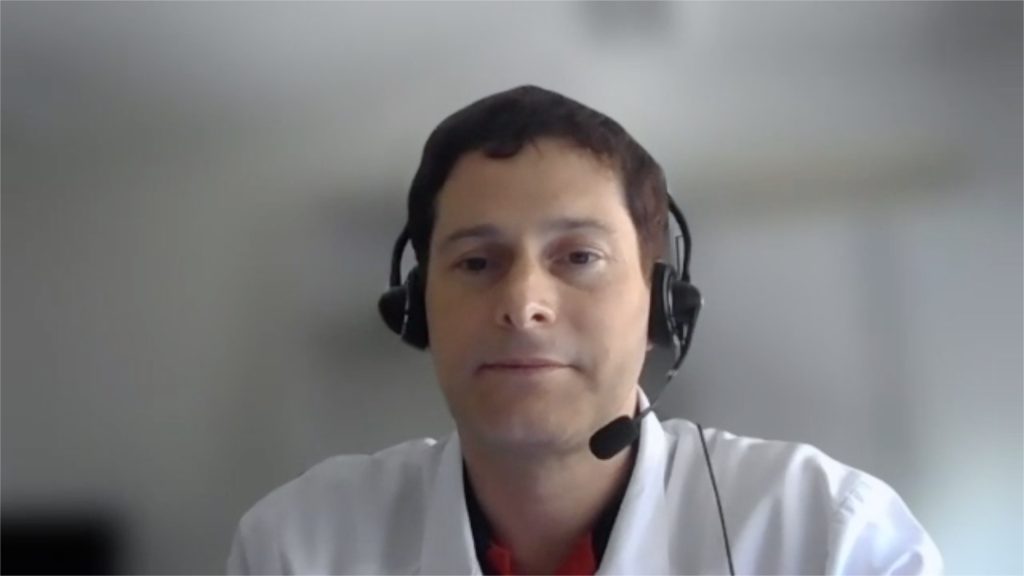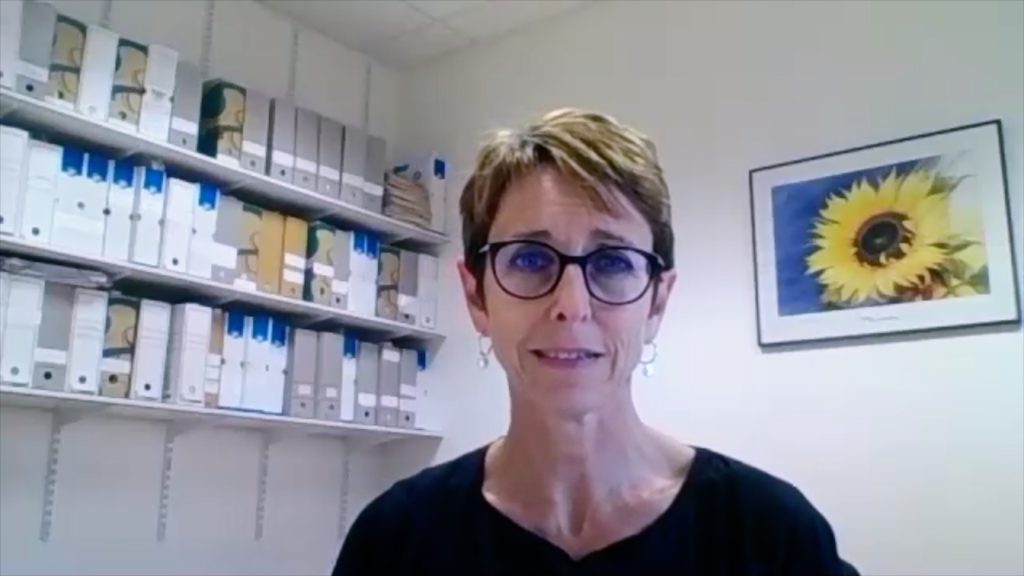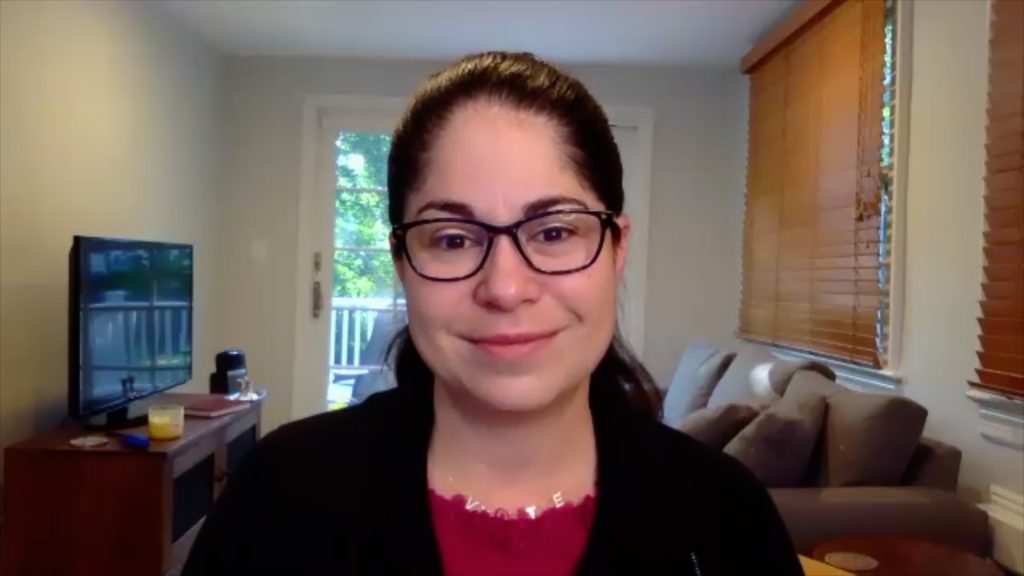Craig E Devoe1 and Wadie F Bahou2
- Northwell Health Cancer Institute, Zucker School of Medicine at Hofstra/Northwell, Lake Success, NY, USA
- Stony Brook University Medical Center, Stony Brook, NY, USA
Q. What is the current outlook on the effect of COVID-19 on patients with cancer and hematologic malignancies?
The COVID-19 (SARS-CoV-2) pandemic has been devastating to people and economies around the world. Given the highly immunosuppressed state of patients with heamatologic malignancies, they are thought to be at substantially higher risk of adverse outcomes relative to the general population. A report of the WHO–China Joint Mission on Coronavirus Disease indicated that in China, the crude fatality rate for patients with cancer as a comorbid condition and laboratory confirmed infection was 7.6%, compared to 1.4% in those with no comorbid conditions.1 The Chinese Center for Disease Control and Prevention separately reported the overall case fatality rate as 2.3%; whereas this rate was 5.6% in patients with cancer.2 In both reports, the types of cancer, treatment, and patient demographics were not mentioned. Besides cancer, other factors associated with high risk for severe disease include age over 60 years, hypertension, diabetes mellitus, cardiovascular disease and chronic respiratory disease. 1
As well as the increased mortality from COVID-19 in patients with comorbidities, patients in the USA with cancer also have the addition burden of financial strain in terms of their healthcare expenses; the current economic slowdown will be particularly difficult for this population. The slowing and closing of businesses will leave many patients without the ability to earn income and pay for their living and healthcare expenses, resulting in exaggerated socioeconomic disparities to optimal care. The Italian experience has been published in The Cancer Letter.3 Since their healthcare system is similar to that of the USA, lessons learned there are critical to informing USA expectations.
To slow the transmission of virus and decrease the strain on the healthcare system, profound alterations in operations, and in public behavior including social distancing, are the only immediate ways forward at this time. Some of the success and failures during this crisis will likely have long-term effects on healthcare delivery and doctor–patient relationships. The use and of acceptance of telehealth by patients, providers, and payers will likely continue and expand; emergency preparedness drills will become common practice in hospitals; and PPE will be stockpiled for future national emergencies. Hopefully, the manufacturing of pharmaceuticals; materials, such as the N95 respirator; and chemicals, such as testing reagents, will stabilize, so that the supply chain of these critical health care goods remain readily available for widespread international use. In time, scientific advances in treatment and prevention of this disease will provide longer-term solutions and help lead to the return of public optimism, economic recovery, and restoration of lifestyle normalcy.
Q. How have physicians and caregivers had to adapt to support their patients during the COVID-19 pandemic?
The impact of COVID-19 on the delivery of cancer services, and on the way that cancer patients are managed, has been profound. The operations of cancer centers around the country have been rapidly and dramatically altered in order to continue to meet the needs of the patients in a safe and effective manner, and to protect healthcare workers.4,5 Since early March 2020, each consecutive week has seen an increasing level of emergency actions. Presumably due to the increased frequency of office and hospital visits (or enhanced testing frequency), and the fact that patients with cancer have substantially higher risk of COVID infection compared to patients without cancer in the community.6 Many cancer centers have limited non-essential patient visits and associated visitors, in order to limit face-to-face interactions. Other strategies include pre-visit phone calls and in-office screening of patients for fever, cough and exposure; remote work from home for non-patient facing employees; rescheduling of routine patient surveillance radiologic scans and in-office follow-up visits; local laboratory or home blood draws; and phone-based or telehealth appointments. Of note, the decision by Centers for Medicare and Medicaid Services to expand telehealth services to at-home settings has transformed this field overnight. Much of this has been done to protect the patients and providers from each other and limit person-to-person transmission.
Testing for COVID-19 by nasal swab polymerase chain reaction has become a critical component of crisis management in the identification and triaging of patients. To avoid transmission to other vulnerable patients in the waiting rooms and treatment rooms, cancer centers have rerouted moderately ill patients with fever and cough to urgent care facilities, and severely ill patients to emergency departments. Unfortunately, testing capacity has been greatly stymied by supply chain disruption, where critical reagents cannot be obtained from overseas. This has made it challenging to determine how to advise ill patients, and whether to quarantine them at home or temporarily suspend their chemotherapy.
A recent report from China found that patients with cancer were observed to have a higher risk of severe events compared with patients without cancer (seven of 18 [39%] patients versus 124 of 1,572 [8%] patients; Fisher’s exact p=0.0003).7 Verification in larger international cohorts and demographic groups, along with details by cancer type and stage, remains an ongoing area of investigation. At this time, there is no direct evidence to support changing or withholding chemotherapy or immunotherapy in patients with cancer, although patient-specific modifications should be considered for active COVID-19 infection. When possible, patients on intravenous treatments are converted to oral agents that can be delivered to the home and require fewer in-office visits. Some treatment choices may be designed to decrease the development of neutropenic fever, where these vulnerable patients would otherwise be subjected to overcrowded emergency departments, and the potentially fatal ramifications of a COVID-19 exposure and infection. Nevertheless, many patients on cancer treatment must continue to frequent the cancer center for their curative, adjuvant or palliative chemotherapy, as no viable alternatives exist.
Q. What are the latest guidelines on managing patients with hematologic malignancies?
Patients with hematologic malignancies are especially vulnerable as their treatments are intentionally designed to eradicate myeloid- or lymphoid-based diseases, rendering them highly immunosuppressed and unable to mount sufficient adaptive or innate responses to the novel viral infection. Guidelines are being generated from national societies and posted online to allow for regular updates. To reduce the risk of neutropenia, the American Society of Clinical Oncology has established guidelines and advises that less intensive treatment be administered where possible.8 The American Society of Hematology has also released guidelines which should be revisited over time for updates.9 For example, the risks and benefits of R-CHOP (rituximab, cyclophosphamide, doxorubicin hydrochloride, vincristine [Oncovin], and prednisolone) should be considered in lieu of R-EPOCH (rituximab, etoposide phosphate, prednisone, vincristine [Oncovin], cyclophosphamide, and doxorubicin hydrochloride), which is designed for dose-escalation until sufficient cytopenias are induced, for double-hit diffuse large B-cell lymphoma.
Patients should be screened for signs and symptoms and tested for COVID-19, if available, prior to initiation of chemotherapy. For patients who test positive and can wait, we recommend to allow symptoms of the illness to subside prior to the initiation of chemotherapy. The modification of otherwise potentially curative treatments for patients with hematologic malignancies may adversely affect outcomes and needs to be discussed on a case-by-case basis with a focus on the goal of the therapy. A more aggressive use of granulocyte colony-stimulating factors (G-CSF) as primary prophylaxis, may be warranted to prevent neutropenic fever and avoid emergency department visits. Practitioners must be cautious, however, regarding use of G-CSF in patients with active COVID-19 infection and moderate to severe pulmonary symptoms, as this patient subset may already have high endogenous amounts of proinflammatory cytokines, including G-CSF, interleukin-2 and tumor necrosis factor-a, among others.10
Insurers and national societies need to rapidly broaden the eligibility criteria so such treatments are covered. Moreover, prior authorization processes need to be limited, streamlined, or abandoned during this crisis, so that patients can immediately access what doctors prescribe. The Community Oncology Alliance, which is a national society of independent oncology practices that treats over 50% of patients with cancer in the USA, has raised this issue and is in discussions with insurers and Congressional officials.
Q. What is the current understanding of how COVID-19 impacts stem cell transplantation and cell therapy?
Patients who are scheduled for hematopoietic stem cell therapy have an even greater risk of COVID-19-related adverse events and outcomes due to prolonged neutropenia and mucositis. Where possible, autologous transplants for patients with multiple myeloma can be deferred and standard outpatient therapies continued. However, allogenic transplants often cannot be delayed as the risk of disease relapse looms. Prolonged inpatient treatment and recovery, places these patients at risk from in-hospital outbreaks of COVID-19 infection. Visitation policies have recently become completely restrictive. Post-transplant, these patients will remain on immunosuppressive therapy for many months or longer, and will continue to be at excessive risk even in the outpatient setting. To protect patients, Italian providers who care for patients with hematologic malignancies are swabbed and tested for COVID-19 every week.3 If sufficient testing capacity becomes available worldwide, such an approach should be implemented as well.
Another logistical consideration for allogeneic transplantation is the safety and availability of the donor. Donors may be subject to travel bans, or to infection with COVID-19 making, them ineligible for donation. Consideration to quarantine the donor prior to initiation of the conditioning chemotherapy can avert a disastrous situation for the patient. The National Marrow Donor Program has recently made cryopreservation prior to conditioning, a requirement.11 Since transplant patients require blood product component support (red cells, platelets, plasma), potential for transmission of COVID-19 remains a concern, although unestablished at this time. However, respiratory viruses, in general, are not known to be transmitted by blood transfusion, and there have been no documented cases of transfusion-transmitted coronavirus.
References:
- World Health Organization. Report of the WHO-China Joint Mission on Coronavirus Disease 2019 (COVID-19). 2020. Available at: www.who.int/publications-detail/report-of-the-who-china-joint-mission-on-coronavirus-disease-2019-(covid-19) (accessed April 7, 2020).
- Wu Z, McGoogan J. Characteristics of and important lessons from the coronavirus disease 2019 (COVID-19) outbreak in China: summary of a report of 72,314 cases from the Chinese Center for Disease Control and Prevention. JAMA. 2020; doi: 10.1001/jama.2020.2648. [Epub ahead of print].
- Curigliano G.The Cancer Letter. What to Expect: Oncology’s response to coronavirus in Italy. 2020. Available at: https://cancerletter.com/articles/20200311_1/ (accessed April 7, 2020).
- Pergam S, Pisters PWT, Platanias L. The Cancer Letter. Is your cancer center ready for COVID-19. 2020. Available at: https://cancerletter.com/articles/20200313_3/ (accessed April 7, 2020).
- Willan et al Care of the haematology patients in a COVID-19 epidemic. British Journal of Haematology. 2020; doi: 10.1111/bjh.16620. [Epub ahead of print].
- Yu J, Ouyang W, Chua MLK, Xie C. SARS-CoV-2 Transmission in patients with cancer at a tertiary care hospital in Wuhan, China. JAMA Oncol. 2020; e200980.
- Liang W, Guan W, Chen R, et al. Cancer patients in SARS-CoV-2 infection: a nationwide analysis in China. Lancet Oncol. 2020;21:335–37.
- American Society of Clinical Oncology. ASCO Coronavirus Resources. Available at: www.asco.org/asco-coronavirus-information (accessed April 7, 2020).
- American Society of Hematology. COVID-19 Resources. 2020. Available at: https://hematology.org/covid-19 (accessed April 7, 2020).
- Huang C, Wang Y, Li X, et al. Clinical features of patients infected with the 2019 novel coronavirus in Wuhan, China. Lancet. 2020;385:497–506.
- Devine S, Schmidt A. The Cancer Letter. Against all odds: Unrelated stem cell transplants in coronavirus times. 2020. Available at: https://cancerletter.com/articles/20200327_7/ (accessed April 7, 2020).
Additional online resources for providers and patients
– Centers for Disease Control and Prevention. Coronavirus (COVID-19). Available at: cdc.gov/coronavirus/2019-ncov/index.html (accessed April 7, 2020).
– US Food & Drug Administration. Important Information for Blood Establishments Regarding the Novel Coronavirus Outbreak. 2020. Available at: fda.gov/vaccines-blood-biologics/safety-availability-biologics/important-information-blood-establishments-regarding-novel-coronavirus-outbreak (accessed April 7, 2020).
– US Food & Drug Administration. Important Information for Human Cell, Tissue, or Cellular or Tissue-based Product (HCT/P) Establishments Regarding the 2019 Novel Coronavirus Outbreak. 2020. Available at: fda.gov/vaccines-blood-biologics/safety-availability-biologics/important-information-human-cell-tissue-or-cellular-or-tissue-based-product-hctp-establishments (accessed April 7, 2020).
– Be The Match. COVID-19 FAQs. 2020. Available at: https://bethematch.org/blog/patient-stories/covid-19-faqs/ (accessed April 7, 2020).
– Foundation for the Accreditation of Cellular Therapy. Frequently Asked Questions: FACT and Covid-19. Available at: factwebsite.org/Inner.aspx?id=2014&blogid=86&terms=covid (accessed April 7, 2020).
– European Society for Blood and Marrow Transplantation. Coronavirus Disease COVID-19:EBMT Recommendations. 2020. Available at: ebmt.org/ebmt/news/coronavirus-disease-covid-19-ebmt-recommendations-update-march-23-2020 (accessed April 7, 2020).
– World Health Organization. Coronavirus Disease (COVID-19) Pandemic. 2020. Available at: who.int/emergencies/diseases/novel-coronavirus-2019 (accessed April 7, 2020).
– World Health Organization. Global Research Database on coronavirus disease (COVID-19). Available at: who.int/emergencies/diseases/novel-coronavirus-2019/global-research-on-novel-coronavirus-2019-ncov (accessed April 7, 2020).
– World Marrow Donor Association. COVID-19 Impact on Registry Operations. Available at: https://share.wmda.info/display/LP/COVID-19+-+Impact+on+Registry+Operations#/
– National Consortium of Telehealth Resource Centers. COVID-19 Telehealth Toolkit. 2020. Available at: telehealthresourcecenter.org/resource-documents/ (accessed April 7, 2020).
– NYC Health Department. FAQ About 2019 Novel Coronavirus and COVID-19 for Health Care Providers. 2020. Available at: nyc.gov/assets/doh/downloads/pdf/imm/covid-19-provider-faqs.pdf (accessed April 7, 2020).
Support: Commissioned, developed and funded by Touch Medical Media
Published: 9 April 2020



